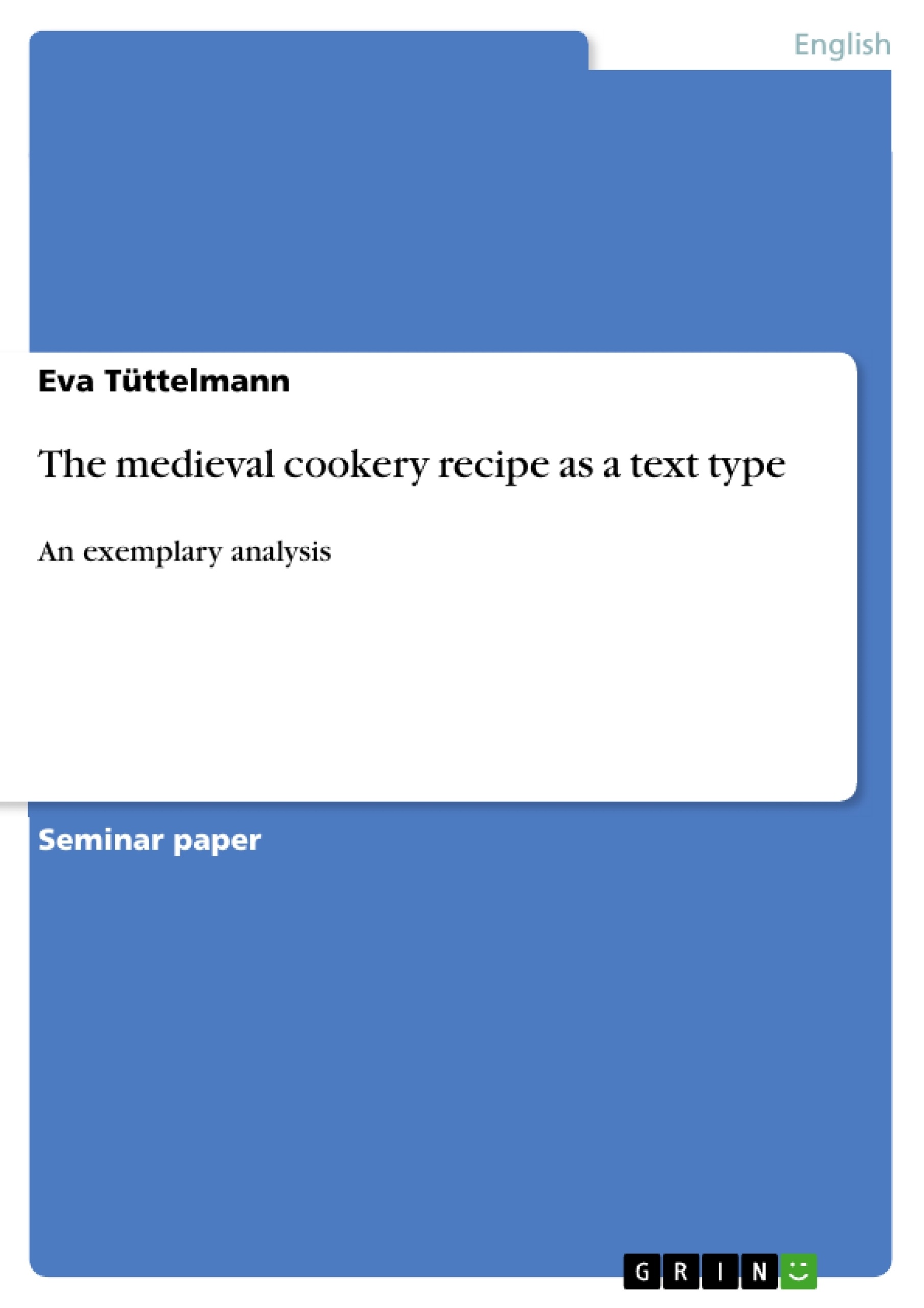Textlinguistics can be described as a linguistic discipline that investigates language on a wider level than formally usual. Discussing the text as a whole system derives from the conclusion that "linguistic investigations cannot be limited to the classic disciplines of phonology, morphology, syntax and lexicology" (Görlach 2004: 3).
In attempt of a diachronic research of text types a synchronic analysis should be given precedence. What are the characteristic features of the text type? What is its function? What are its restrictions? Examples of the same period might help to get a comprehensive notion of the text type in question.
Having established the linguistic elements characterizing the text type, one can start out a diachronic investigation. Its development and the reasons for change or stasis have to be examined and set into context. Examples of the text type from different points in the history of the language need to be compared with each other. The development of a text type through time requires a close look at textual traditions and how the text type and its authors were influenced throughout time (Jucker 2000: 103). Nevertheless one must not forget that due to the limitation of examples it is impossible to depict a complete evolution of a text type.
Making a start, I will deal with different terms designating the text type as a linguistic category and the way a text type is defined. This can only be done in an exemplary manner, as there has been such an amount of unlike positions. In addition, I shall elucidate what makes up the cookery recipe in particular. In what follows this paper contains the analyses of four examples, the focus being placed on their linguistic features. The excerpts chosen originate from the late Middle English to early Modern English period and are taken from collections including a large number of recipes. Finally, I will sharply go into finding out whether the cookery recipe is evolutionally stable or discontinuous.
Inhaltsverzeichnis (Table of Contents)
- Introduction
- Problems in designation: What is a text type?
- The cookery recipe as a text type
- Linguistic features of the cookery recipe: An exemplary analysis
- Two fifteenth-century cookery books (~1420)
- Liber cure cocorum (~ 1430)
- A Proper Newe Booke of Cokerye (16th century)
- Conclusion
- Bibliography
Zielsetzung und Themenschwerpunkte (Objectives and Key Themes)
This paper aims to explore the cookery recipe as a text type through a synchronic and diachronic analysis. It investigates the linguistic features that characterize this text type and examines its evolution over time. The paper aims to provide a comprehensive understanding of the cookery recipe as a linguistic phenomenon.
- Defining the concept of text type and its distinctions from related terms like genre and register.
- Analyzing the linguistic features of the cookery recipe through an exemplary analysis of several cookery books from different periods.
- Examining the development of the cookery recipe over time, considering its textual traditions and historical context.
- Determining the stability or discontinuity of the cookery recipe as a text type throughout its evolution.
- Understanding the influence of cultural and societal factors on the development and usage of cookery recipes.
Zusammenfassung der Kapitel (Chapter Summaries)
The introduction provides an overview of textlinguistics and its focus on analyzing texts as complete systems. It emphasizes the importance of both synchronic and diachronic approaches in understanding text types.
Chapter 2 examines the challenges in defining and categorizing text types. It discusses the problematic use of terms like "text type," "genre," and "register" and explores different perspectives on their definitions.
Chapter 3 focuses specifically on the cookery recipe as a text type. It delves into the characteristics that distinguish this type of text and its specific function in communication.
Chapter 4 analyzes the linguistic features of the cookery recipe through an exemplary analysis of several cookery books from different periods, including two fifteenth-century cookery books, Liber cure cocorum, and A Proper Newe Booke of Cokerye.
Schlüsselwörter (Keywords)
Textlinguistics, text type, genre, register, cookery recipe, linguistic features, diachronic analysis, synchronic analysis, Middle English, Early Modern English, textual traditions, historical context.
- Quote paper
- Eva Tüttelmann (Author), 2006, The medieval cookery recipe as a text type, Munich, GRIN Verlag, https://www.grin.com/document/75879



